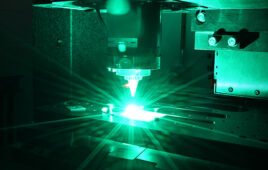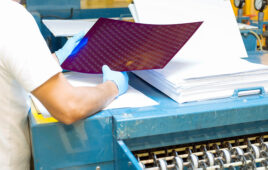
[Image from unsplash.com]
A global manufacturing footprint can help medical device companies capture value for their businesses by accessing talent and reducing costs. Here’s how to successfully execute this strategy without falling into a reactionary offshore initiative.
In the last two decades there was an undeniable shift in the U.S. toward offshoring manufacturing for all types of goods, medtech and medical devices included. One of the primary drivers of that trend was the pursuit of increased profit margins by reducing operating costs; in many cases, specifically reduced labor costs.
Now companies seem to be making adjustments from the short-term benefit of offshoring to considering broader strategic plans that maximize resources and align the enterprise for long-term, sustainable goal achievement. Some companies have stopped chasing low labor rates, as lower-cost countries increase their middle class and labor rates increase. That leaves the enterprise with a manufacturing facility in a country far from its core team and market without the benefit of the once-disproportionately low labor rates.
The difference between a well-executed global manufacturing footprint strategy and a reactionary offshore initiative usually comes down to which global market drivers are being considered, how the risks-versus-benefits are analyzed and how frequently these drivers or trends are monitored. Trends must be monitored closely and forward-thinking decisions made when it comes to creating a global manufacturing footprint. For example, less than a decade ago executives were stressing the importance of the BRIC markets (Brazil, Russia, India and China). The emphasis on the BRIC markets as high-priority targets has changed significantly, driven by a variety of global market conditions:
-
The reversal of economic progress with multiple years of recession, as well as on-going political corruption scandals in Brazil
-
The slumbering economy and general uncertainty regarding Russia
-
The impact of rising income levels of workers along with a slowing economy in China
-
Increased interest in manufacturing opportunities in countries including South Africa, Turkey, Vietnam, Poland and Saudi Arabia
There are a variety of ways to achieve a global footprint, depending on the speed with which companies decide to pursue that strategy and the market conditions that make one method more or less favorable. A global footprint can be achieved via internal growth, which could mean the creation of new facilities or expansion of current facilities. It can be achieved via outsourcing, such as the utilization of contract manufacturers. It can also be achieved via joint ventures, partnerships, or mergers and acquisitions (M&A). Each method has individual and unique pros and cons.
At Preh IMA Automation we have been on the offensive, taking a very aggressive approach toward achieving our global footprint goal, by acquiring complementary companies in strategic locations while expanding current facilities. Our keys to success include complexity reduction, clear allocation of responsibilities, enterprise-wide development and deployment of the plan – and, above all, communication.
As a manufacturing and assembly automation equipment builder, we must have the same thought process as the manufacturing companies with which we partner. For us, a global footprint is not only about being aligned geographically, but philosophically as well. As we do business with multi-national companies with manufacturing facilities in many countries, we too must be able to address different regulatory environments and regulations, overcome the existence of cultural differences, navigate import/export obstacles and alleviate communication barriers, to name a few, all while operating and appearing as one company worldwide.
A good global manufacturing footprint strategy is executed pursuing cost reduction, incentives, improved logistics, access to talent, vendor/supplier alignment and any other pertinent opportunities to capture value for your business. All of these need to be analyzed, considered and balanced, instead of taking a singularly focused, reactionary approach.
Oscar Ford is the Business Development Manager for Preh IMA Automation (U.S. headquarters: Evansville, Ind.), where he is responsible for the strategic direction driving customer diversification and market expansion, with a focus on the Healthcare/Medical market.




